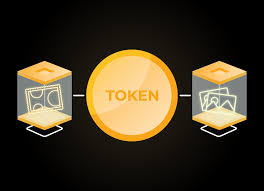Blog By: Priyanka Rana
Securing Your Ecosystem: 8 Essential Steps for Third-Party Risk Management
In today’s interconnected business environment, safeguarding against external threats is crucial. With the average company sharing sensitive information with hundreds of third-party vendors, the risks are significant. Here’s a comprehensive approach to assessing and managing third-party risks effectively.
Understanding Third-Party Risk Management (TPRM)
Third-party vendors, including service providers, cloud platforms, and suppliers, often have access to sensitive organizational data. While collaboration with these vendors can enhance efficiency, it also exposes businesses to potential security breaches. According to research, a significant portion of data breaches stem from vulnerabilities in third-party systems.
The Landscape of Third-Party Security Risk in 2024
As technology advances and global business practices evolve, the complexity of third-party risks continues to grow. Recent statistics highlight the prevalence and impact of breaches originating from third-party vulnerabilities, underlining the urgent need for robust risk management strategies.
Types of Third-Party Security Risk
Partnering with third-party vendors introduces various risks, including cybersecurity, compliance, reputational, financial, operational, and strategic risks. Each type of risk poses unique challenges and requires tailored mitigation strategies.
Steps to Conduct a Third-Party Security Risk Assessment
A thorough risk assessment is essential for understanding and mitigating third-party risks effectively. Here’s a step-by-step guide:
- Establish Acceptable Risk Levels: Define acceptable levels of risk based on organizational goals, regulatory requirements, and financial capabilities, involving key stakeholders in the process.
- Identify Relevant Risks: Assess potential risks associated with each vendor, considering factors such as access to internal networks, regulatory compliance, and past incidents.
- Evaluate Vendor’s Control Environment: Conduct due diligence to understand the vendor’s security measures, compliance status, incident response capabilities, and business continuity plans.
- Address Fourth-Party Risks: Assess subcontractors’ risks and ensure that vendors manage their subcontractors effectively by including relevant clauses in contracts.
- Classify Risks: Use a risk register and matrix to prioritize risks based on likelihood and impact, enabling focused mitigation efforts.
- Implement Mitigating Controls: Require vendors to meet minimum security and compliance requirements outlined in contracts, ensuring alignment with organizational standards.
- Continuously Monitor Risks: Conduct regular risk assessments and update risk scores to maintain an accurate understanding of the risk landscape.
- Define Vendor Exit Strategy: Have a plan in place to terminate relationships with vendors if they no longer meet acceptable risk levels, ensuring proper offboarding procedures to mitigate security risks.
Enhancing Third-Party Security Risk Management
Utilize AI-enhanced risk assessment workflows to streamline risk identification and mitigation. Document risk treatment plans and leverage a comprehensive risk library to strengthen security posture. Implement continuous monitoring across the technology stack to detect vulnerabilities promptly.
By following these steps and leveraging advanced tools, organizations can effectively assess, mitigate, and manage third-party security risks, safeguarding their operations and reputation in an increasingly interconnected business environment.

04
MayRecent Blog
The Web Privacy ValidationMay 27, 2025
India’s First Creator LandMay 21, 2025
Tokenization – An Initiative By RBIMay 20, 2025
The BioMetric E-PassportsMay 19, 2025
AI HallucinationsMay 16, 2025




